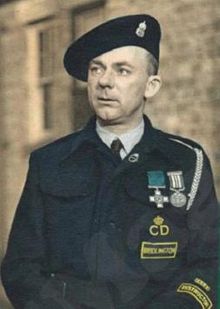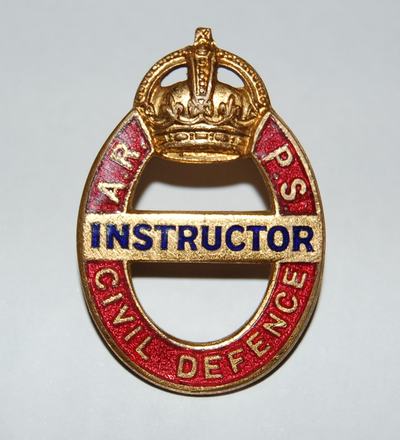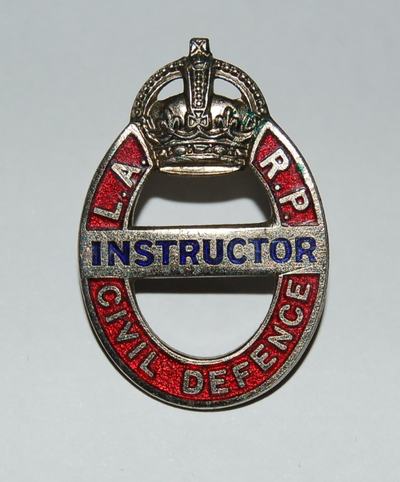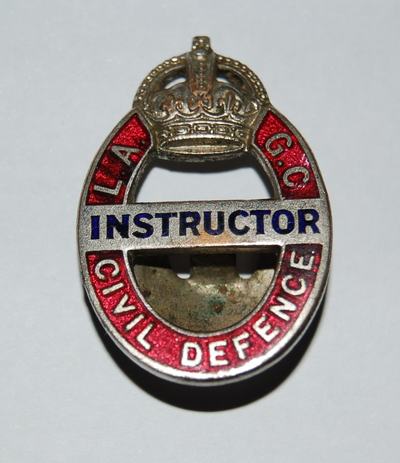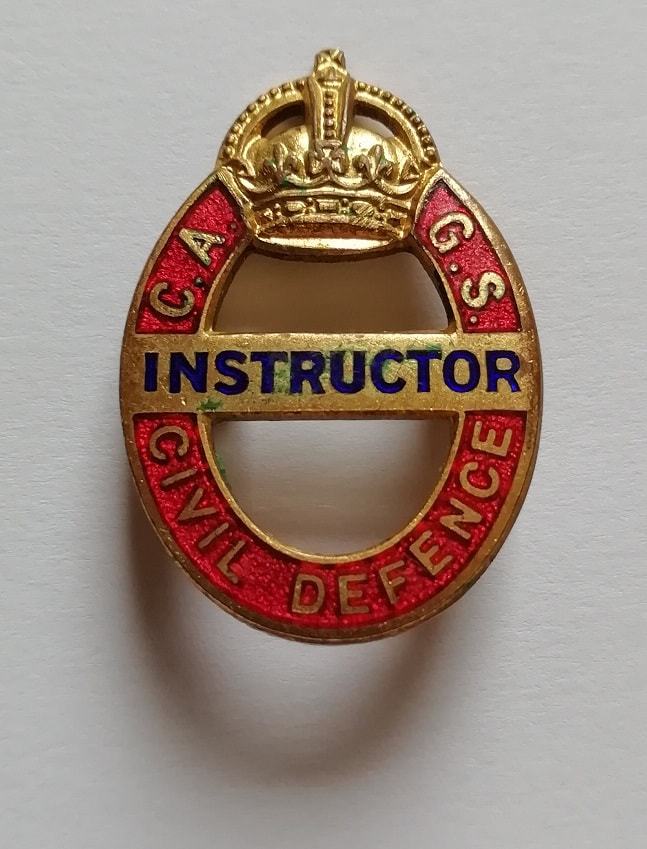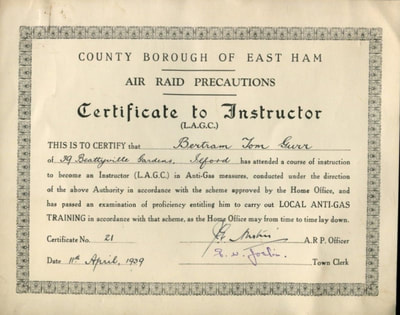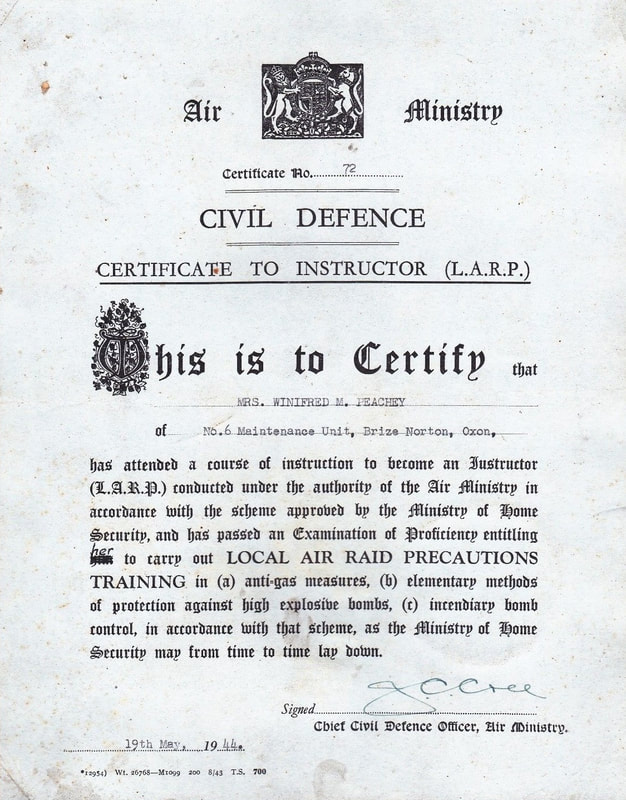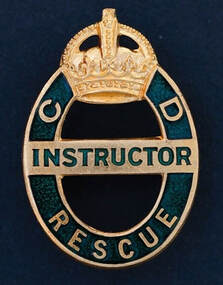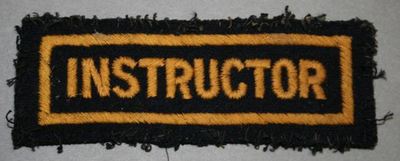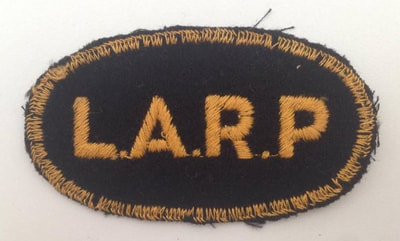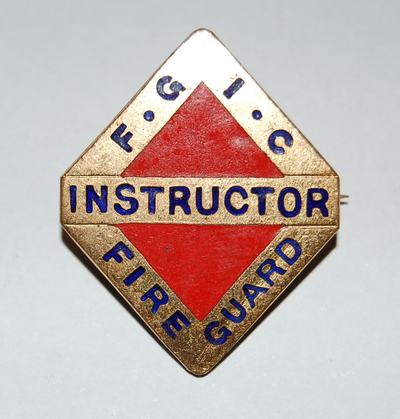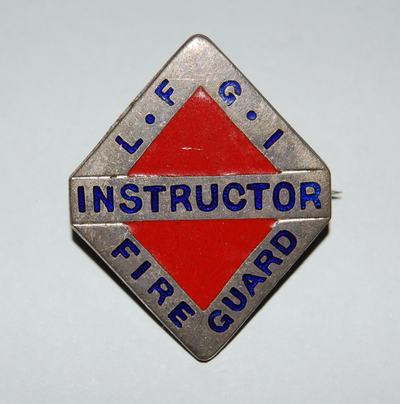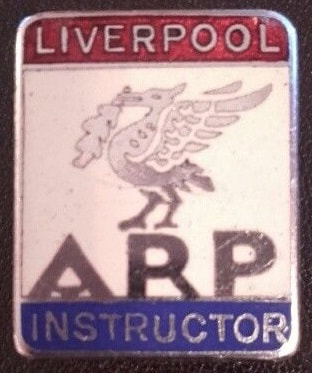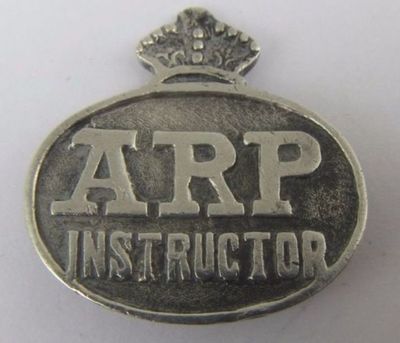WW2 Civil Defence ARPS, LARP, LAGC & CAGS Instructor Badges
|
Although instructors had been trained in the pre-war years, no insignia or badges were produced to recognize their training. As more and more people qualified as instructors there was pressure to create badges and in January 1942 a series of official badges was released and noted in ARP Training Bulletin No. 8 and cost one shilling (paid for by the person undertaking the course).
Four classes of badge were created:
|
A Ministry of Home Security Circular (No.15/1942) in late January 1942 detailed the badges. The Civilian Anti-Gas School (CAGS) opened in 1936 at Eastwood Park in Falfield, Gloucestershire. During the second world war it was renamed "The Ministry of Home Security Air Raid Precautions School". A second CAGS school was opened at Hawkhills, Easingwold, North Yorkshire in December 1937 (it later became a Civil Defence School for the Civil Defence Corps). Courses for anti-gas instructors took 10 working days, and a short course for senior officials took five days. Both schools ran courses that would issue certificates and the recipients could then apply for the gold-coloured ARPS and CAGS instructors' badges from their local authority.
Those who passed the training course could purchase a badge from their local authority. Badges featured the brooch fitting for women and the half moon lapel buttonhole fitting for men. Badges could be worn on both civilian clothes and uniforms (usually on the left lapel, collar or breast pocket). Of the four badges, the CAGS badge appears to be extremely rare.
Cloth sample versions of the LARP and ARPS were created but not officially sanctioned for use.
Those who passed the training course could purchase a badge from their local authority. Badges featured the brooch fitting for women and the half moon lapel buttonhole fitting for men. Badges could be worn on both civilian clothes and uniforms (usually on the left lapel, collar or breast pocket). Of the four badges, the CAGS badge appears to be extremely rare.
Cloth sample versions of the LARP and ARPS were created but not officially sanctioned for use.
WW2 Civil Defence CD Rescue Instructor Badge
|
Lastly, there exists a green on gold lapel badge with INSTRUCTOR surmounted by the letters CD and a King's crown and with the word RESCUE at the bottom (made by HW Miller, same as the ones above). Currently, no official documentation regarding this badge has come to light but it is thought this was an official badge issued to members of Rescue Squads that had passed a course in rescue training.
|
Cloth Badges - Instructor and LARP
Although no versions of the above badges were officially released, a number of unofficial versions can be seen in period photos. The word 'INSTRUCTOR' in old gold inside a an oblong can be seen worn on the lower left sleeve (see photo top right)
There are a number of LARP cloth badges that may be for LARP instructors. These are yellow letters inside an oval (to date no photographic evidence shows this being worn). As can be seen on the portrait of Thomas Alderson, he had a small ARPS in old gold placed just above his Instructor badge. It is extremely rare to see period photos featuring these unofficial badges.
There are a number of LARP cloth badges that may be for LARP instructors. These are yellow letters inside an oval (to date no photographic evidence shows this being worn). As can be seen on the portrait of Thomas Alderson, he had a small ARPS in old gold placed just above his Instructor badge. It is extremely rare to see period photos featuring these unofficial badges.
Fire Guard Instructors' Badges
To recognise the training that Fire Guard instructors had undertaken, two badges were produced from July 1944. The gold-coloured, nationally trained Fire Guard Instructors Course (FGIC) and the silver-coloured, locally-trained Local Fire Guard Instructors (LFGI).
Metal ARP Instructor Lapel Badges
Local-authority approved and semi-official metal instructor badges turn up from time to time. It's likely that officially trained instructors may have purchased them in addition to the standard official badges listed above.
